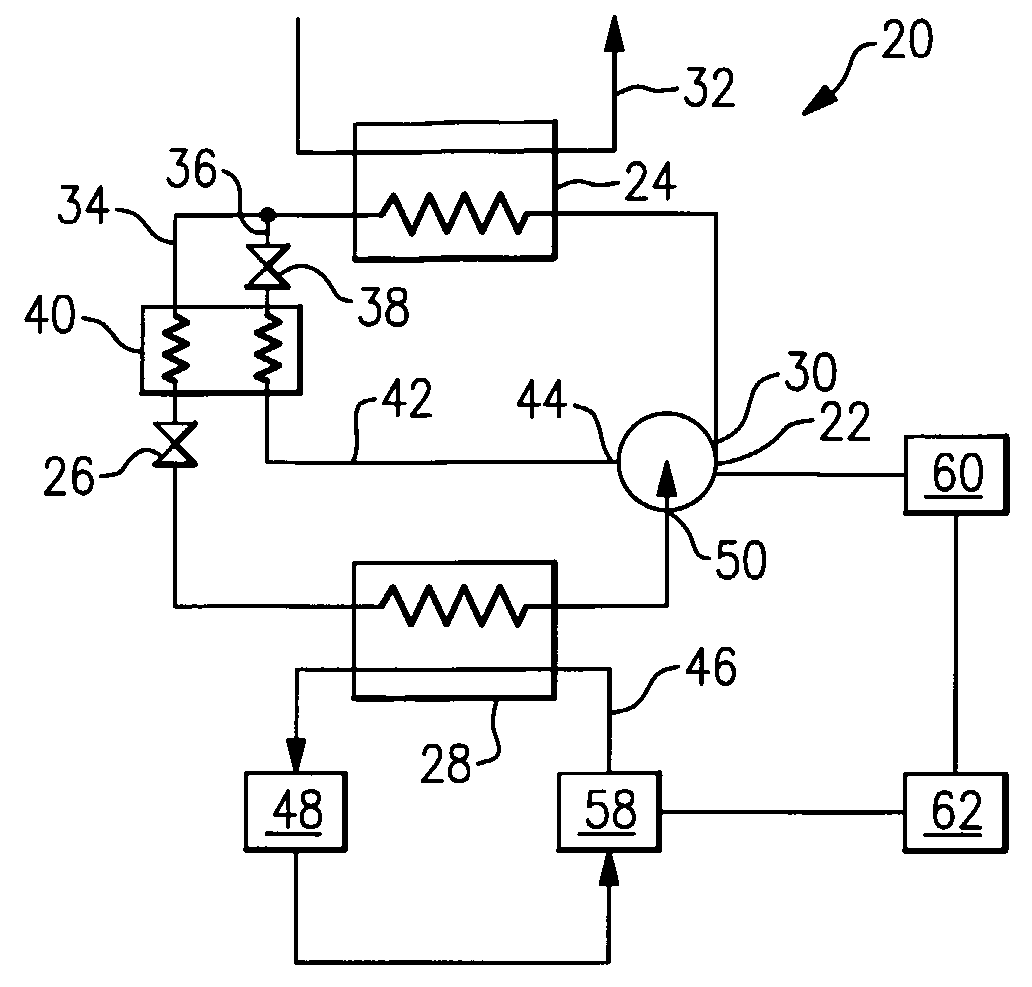Method and Apparatus of Optimizing the Cooling Load of an Economized Vapor Compression System
a technology of economized vapor compression and cooling load, which is applied in the direction of refrigeration safety arrangement, refrigeration components, lighting and heating apparatus, etc., can solve the problems of inability to control the compressor to match the multi-stage compressor performs not as well as the single-stage compressor, and the compressor is unable to meet the load requirements of the economized vapor compression system, so as to reduce the speed of the compressor and reduce the efficiency rate rate of the compressor
- Summary
- Abstract
- Description
- Claims
- Application Information
AI Technical Summary
Benefits of technology
Problems solved by technology
Method used
Image
Examples
Embodiment Construction
[0016]FIG. 1 illustrates an example vapor compression system 20 including a single stage compressor 22, a heat rejecting heat exchanger 24, an expansion device 26, and a heat accepting heat exchanger 28. Refrigerant circulates though the closed circuit vapor compression system 20. The refrigerant exits the compressor 22 through a discharge port 30 at a high pressure and a high enthalpy.
[0017]The refrigerant then flows through the heat rejecting heat exchanger 24, such as a condenser or gas cooler. An external fluid medium 32, such as water or air, flows through the heat rejecting heat exchanger 24 and exchanges heat with the refrigerant flowing through the heat rejecting heat exchanger 24. The refrigerant rejects heat to the external fluid medium 32 and exits the heat rejecting heat exchanger 24 at a relatively low enthalpy and a high pressure.
[0018]The refrigerant then splits into a main flow path 34 and an economizer flow path 36. Refrigerant in the economizer flow path 36 is expa...
PUM
 Login to View More
Login to View More Abstract
Description
Claims
Application Information
 Login to View More
Login to View More - R&D
- Intellectual Property
- Life Sciences
- Materials
- Tech Scout
- Unparalleled Data Quality
- Higher Quality Content
- 60% Fewer Hallucinations
Browse by: Latest US Patents, China's latest patents, Technical Efficacy Thesaurus, Application Domain, Technology Topic, Popular Technical Reports.
© 2025 PatSnap. All rights reserved.Legal|Privacy policy|Modern Slavery Act Transparency Statement|Sitemap|About US| Contact US: help@patsnap.com


